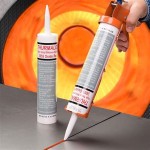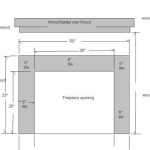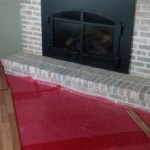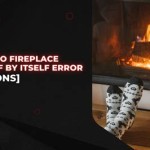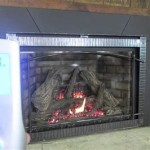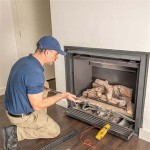Heatilator Gas Fireplace Screen Replacement: A Comprehensive Guide
A Heatilator gas fireplace offers both aesthetic appeal and functional warmth to a home. A crucial component of its safe operation and attractive design is the fireplace screen. Over time, these screens can become damaged due to heat exposure, accidental impact, or general wear and tear. Replacing a damaged or worn-out screen is essential for maintaining the fireplace's safety and aesthetic integrity. This article provides a detailed guide to understanding the process of Heatilator gas fireplace screen replacement.
Fireplace screens serve a dual purpose. Primarily, they protect individuals and surrounding furnishings from sparks and embers that may escape the firebox. The screen acts as a barrier, preventing accidental burns or fires. Secondly, screens contribute to the overall visual appeal of the fireplace. They come in various styles, finishes, and designs, allowing homeowners to customize the look of their fireplace to match their decor. A damaged or missing screen compromises both of these functions, making replacement a necessary maintenance task.
Identifying the Need for Replacement
Recognizing the specific indicators that necessitate screen replacement is the first step in the process. Several factors suggest the screen is no longer functioning optimally and should be replaced. Visually inspect the screen for the following:
Physical Damage: Check for tears, holes, or significant bends in the mesh. Even small holes can allow sparks to escape, posing a safety risk. Dents or bends can also compromise the structural integrity of the screen, making it less effective at containing embers.
Rust or Corrosion: Exposure to heat and moisture can lead to rust or corrosion, weakening the screen material. Rust can reduce the screen's ability to withstand heat and stress, potentially leading to breakage. Corroded screens may also become unsightly and detract from the fireplace's appearance.
Loose or Damaged Hardware: Inspect the hinges, handles, and mounting brackets. If these components are loose, broken, or damaged, the screen may not be securely attached to the fireplace. Damaged hardware can also make it difficult to open and close the screen, hindering maintenance and cleaning.
General Wear and Tear: Even without obvious damage, the screen may show signs of general wear and tear after prolonged use. The mesh may become stretched or saggy, and the finish may fade or chip. This indicates the screen is nearing the end of its lifespan and should be replaced.
Selecting the Correct Replacement Screen
Once the need for replacement is established, choosing the right replacement screen is crucial. Selecting the appropriate screen ensures a proper fit, maintains the fireplace's safety rating, and preserves its aesthetic appeal. Consider the following factors when selecting a replacement:
Model Compatibility: The most important consideration is compatibility with the specific Heatilator gas fireplace model. Consult the fireplace's owner's manual or the Heatilator website to identify the correct screen model number or specifications. Using an incompatible screen can result in a poor fit, compromising both safety and aesthetics.
Dimensions: Measure the existing screen accurately to ensure the replacement screen is the correct size. Pay attention to both the width and height of the screen, as well as the depth of the frame. Inaccurate measurements can lead to a screen that is too large or too small, making installation difficult or impossible.
Material and Finish: Consider the material and finish of the replacement screen. Common materials include steel, iron, and brass. Steel screens are durable and affordable, while iron screens offer a more traditional look. Brass screens add a touch of elegance but may require more maintenance to prevent tarnishing. Choose a finish that complements the fireplace's existing hardware and the overall decor of the room.
Screen Type: Heatilator gas fireplaces may use various screen types, including mesh screens, glass doors with mesh, or decorative panels. When replacing a screen, ensure the replacement is the same type as the original. Switching screen types can affect the fireplace's performance and safety.
The Replacement Process: Step-by-Step
Replacing a Heatilator gas fireplace screen is a relatively straightforward process that can be completed with basic tools and skills. However, prioritizing safety and following the proper steps is essential.
Safety First: Before beginning any work on the fireplace, ensure the gas supply is turned off. Locate the gas shut-off valve near the fireplace or at the gas meter and turn it to the "off" position. Allow the fireplace to cool completely before proceeding. Wear gloves to protect hands from sharp edges or debris.
Removing the Old Screen: Carefully remove the existing screen from the fireplace. Depending on the model, the screen may be attached with hinges, clips, or screws. If the screen is hinged, gently lift it off the hinges. If it is secured with clips or screws, use a screwdriver or pliers to remove them. Be careful not to damage the surrounding fireplace components during removal.
Preparing the Fireplace Opening: After removing the old screen, clean the fireplace opening thoroughly. Remove any dust, debris, or soot that may have accumulated. Use a vacuum cleaner with a brush attachment to clean hard-to-reach areas. Inspect the mounting points for the new screen and ensure they are clean and free of obstructions.
Installing the New Screen: Carefully position the new screen in the fireplace opening. Align the screen with the mounting points and secure it in place. If the screen is hinged, simply align the hinges with the corresponding hardware on the fireplace and slide the screen into place. If the screen is secured with clips or screws, use the appropriate fasteners to attach it to the mounting points. Ensure the screen is securely attached and operates smoothly.
Testing and Inspection: After installing the new screen, turn the gas supply back on and test the fireplace. Light the pilot light and observe the flame. Ensure the screen is properly positioned and prevents any sparks or embers from escaping. Check the screen's operation by opening and closing it several times. If any issues arise, consult the fireplace's owner's manual or contact a qualified technician.

Matte Black Heatilator Sc60 Fireplace Door

Black Heatilator Steel Bifold Replacement Fireplace Doors

Gb4942 Geneva 42 Bv Gas Fireplace Heatilatorparts Com

Fireplace Doors For Heatilator Model E42 E 42i Ec42 Ec El42

Matte Black Heatilator Sc60 Fireplace Door

Update Your Heatilator Mark 123 Fireplace In No Time

The Ez Door For Heatilator Fireplaces Fireplace Replacement

Heatilator Novus Gas Fireplace Fireside Hearth Home

Heatilator Element 40 Traditional Uninsulated Radiant Heat Wood Burni Us Fireplace

Heatilator Legacy 42 Trueview Gas Fireplace Impressive Climate Control
Related Posts

